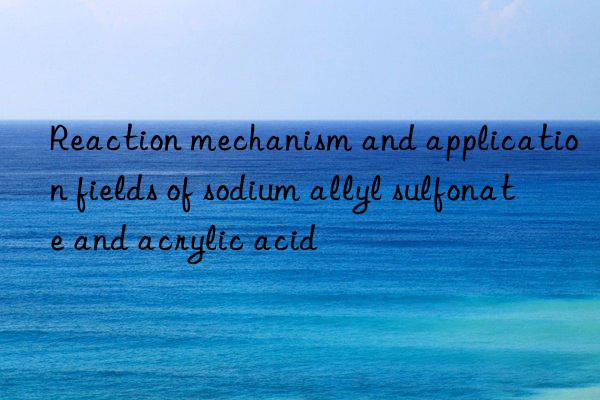
Sodium allyl sulfonate and acrylic acid in the polymerization reaction mechanism
Plays an important role in the application field of polymer materials
Sodium Allyl Sulfonate is a commonly used functional monomer that plays a key role in the polymerization reaction mechanism. Acrylic acid is a common polymer monomer, and the two copolymerize through a specific reaction mechanism to form polymer materials with important application fields.
In the general polymerization reaction mechanism, it is first necessary to select the appropriate initiator and solvent to start the reaction. Sodium allyl sulfonate and acrylic acid are then mixed in a specific ratio and added to the reaction vessel. At this time, the polymerization reaction begins under the action of the initiator.
The first step in the reaction is the addition reaction between sodium allyl sulfonate and acrylic acid. The allyl part of sodium allyl sulfonate forms a mutual covalent bond with the allyl part of acrylic acid, and at the same time a part of the sulfonate ions are released. This addition reaction is the initial step in the polymerization reaction, where the two monomers begin to join together.
Next, the reaction continues, and the addition reaction between sodium allyl sulfonate and acrylic acid continues, causing the polymer chain to continue to extend. The reaction is stopped when the desired degree of polymerization is reached. At this time, there may still be unreacted sodium allyl sulfonate or acrylic acid monomer at the end of the polymer chain, so subsequent treatment steps, such as hydrolysis or neutralization, are required.
Copolymers of sodium allyl sulfonate and acrylic acid are widely used in the field of polymer materials. Due to the unique properties of sodium allyl sulfonate, such as good water solubility and flame retardancy, polymer materials have unique application properties in many fields. For example, polymer materials can be used as hydrogel materials and have important applications in the medical field, such as sustained release of drugs and the preparation of artificial organs. In addition, the copolymer of sodium allyl sulfonate and acrylic acid can also be used in the preparation of electronic devices to improve the performance stability and reliability of the device.
In short, the polymerization reaction mechanism of sodium allyl sulfonate and acrylic acid plays an important role in the application field of polymer materials. By rationally selecting reaction conditions and processing steps, polymer materials with good properties can be obtained, providing high-quality solutions for various industries.

 微信扫一扫打赏
微信扫一扫打赏

